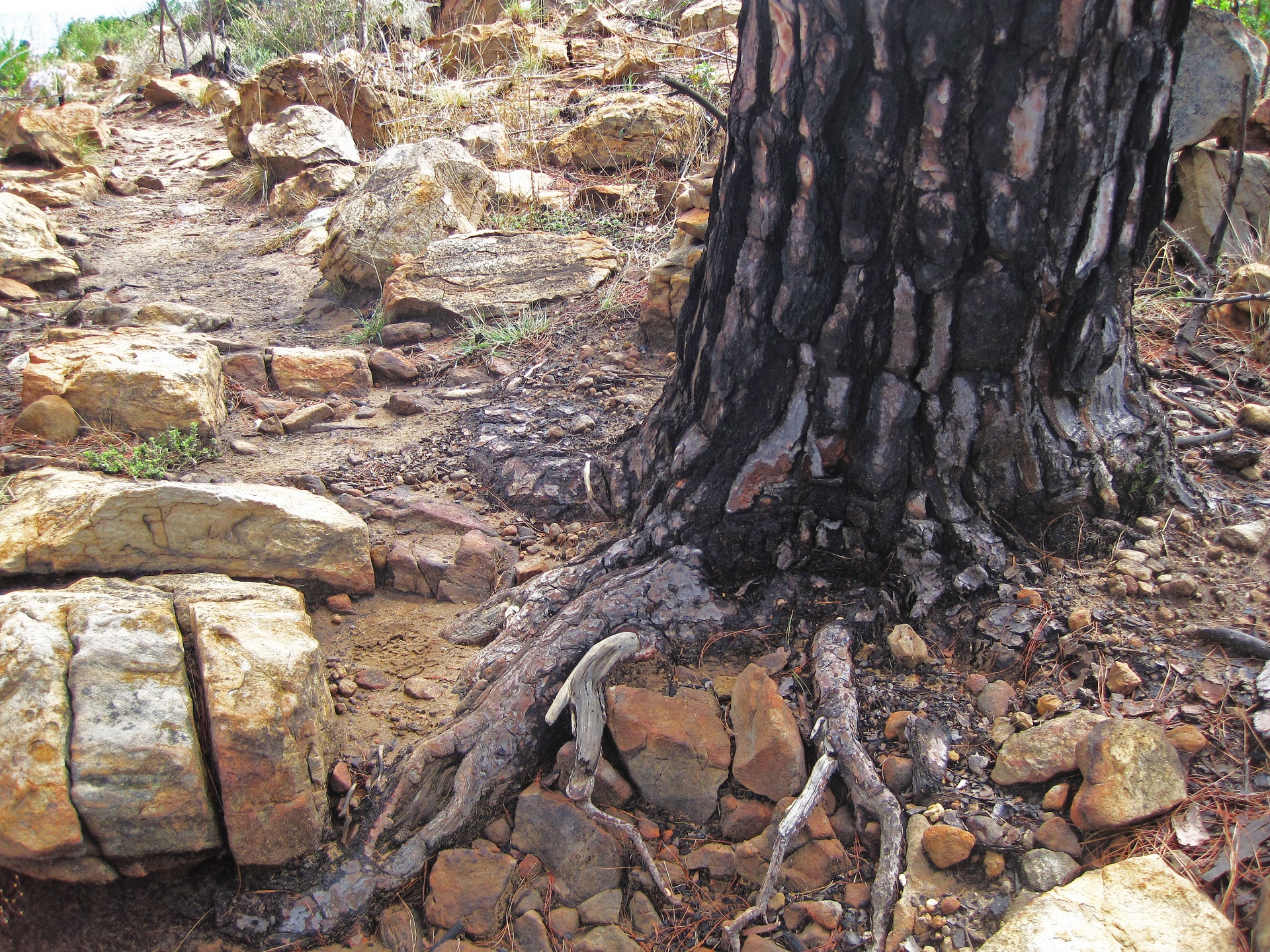
How did the smouldering root fire on New Years Eve turn into the deadly 2025 LA fires?
Thank you for choosing Automatic Translation. Currently we are offering translations from English into French and German, with more translation languages to be added in the near future. Please be aware that these translations are generated by a third party AI software service. While we have found that the translations are mostly correct, they may not be perfect in every case. To ensure the information you read is correct, please refer to the original article in English. If you find an error in a translation which you would like to bring to our attention, it would help us greatly if you let us know. We can correct any text or section, once we are aware of it. Please do not hesitate to contact our webmaster to let us know of any translation errors.
 The 2025 Palisades Fire in Los Angeles began as a small brushfire on New Year’s Eve, but investigators say it smouldered unseen in root systems for nearly a week before strong winds reignited it into one of the most destructive wildfires in city history.
The 2025 Palisades Fire in Los Angeles began as a small brushfire on New Year’s Eve, but investigators say it smouldered unseen in root systems for nearly a week before strong winds reignited it into one of the most destructive wildfires in city history.
Experts note that such “holdover” or root fires are among the most difficult to extinguish completely.
🔥 From Brushfire to Catastrophe
According to federal prosecutors, a 29-year old ma allegedly set fire to vegetation near a Pacific Palisades trailhead just after midnight on January 1, 2025. He even called 911 to report the fire, which firefighters quickly suppressed. But what looked like a routine brushfire was not fully extinguished.
Investigators later determined that embers had penetrated deep into the root systems and soil, creating a “holdover fire.” For nearly a week, the fire smoldered underground, invisible to crews. On January 7, powerful Santa Ana winds fanned the hidden embers back to life. Within hours, the Palisades Fire exploded, killing 12 people, destroying nearly 7,000 homes and businesses, and causing an estimated $150 billion in damages.
Why Root Fires Are So Hard to Kill
Root fires, also called subsurface or duff fires, occur when flames penetrate organic soil layers, tree roots, or peat. Unlike surface brushfires, they:
- Burn slowly and invisibly underground, sometimes for weeks.
- Resist water application, since moisture often doesn’t penetrate deep enough.
- Reignite easily when oxygen and wind conditions change.
The CTIF Forest Fires Commission has highlighted these challenges in international discussions, noting that root fires are especially common in drought-stricken or peat-rich soils. According to CTIF, extinguishing them often requires digging out smouldering roots, flooding with large volumes of water, or applying soil foam suppressants—all labor-intensive and not always feasible in rugged terrain (CTIF.org [1]).
Canadian wildfire training manuals (CIFFC/Alberta S-131) also stress that concealed-space fires—whether in roots, duff, or voids—must be exposed and directly suppressed, or they risk flaring up later.
Lessons for Fire Management
The Palisades case underscores a painful truth: a fire that looks “out” may not be out at all.
- Thermal imaging can help detect underground hotspots, but coverage is rarely perfect.
- Extended patrols after suppression are critical, especially in high-risk wind corridors.
- Public awareness is vital: residents often assume a fire is extinguished once crews leave, but smouldering roots can reignite days later.
The Bigger Picture
The Palisades Fire is now a case study in how climate-driven drought, urban-wildland interfaces, and human-caused ignitions combine into catastrophic outcomes. For CTIF and other international fire organizations, it raises urgent questions:
How can agencies adapt suppression tactics to account for root fires? And how much risk remains even after a “contained” brushfire?
Photo Credit: PublicDomainPictures.net
Charred Base Of Pine Tree Fire
Charred base of a pine tree after a previous wild
Canon PowerShot SD1200IS 1/250s, f 2.8, ISO 80, 6 mm
Sources: (Videos)
- ABC News: Timeline: How the deadly California wildfires unfolded
- PBS Terra Inside the LA Fire Storm
- ABC7: Why was the blaze that turned into the deadly Palisades Fire allowed to smolder?
Articles:
LAist – “Science of Smoldering: How Palisades Fire Could Have Reignited” (Oct 8, 2025)
- Explains that the blaze began as the Lachman Fire on Jan 1, 2025, which was contained to 8 acres.
NBC Los Angeles – “LAFD Releases After-Action Report on Deadly Palisades Fire” (Oct 8, 2025)
- Confirms that the Palisades Fire started six days after a smaller New Year’s Day fire smouldered underground and was reignited by Santa Ana winds. https://www.nbclosangeles.com/news/california-wildfires/lafd-palisades-fire-after-action-report/3788747/
Wikipedia – Palisades Fire (citing LA Times & CAL FIRE sources)
- States the fire was caused by the rekindling of an earlier arson-caused wildfire.
- Notes that the Jan 1 fire was suppressed but later reignited on Jan 7 under extreme wind conditions.
Losses:
- MyNewsLA (Feb 27, 2025): The Palisades and Eaton Fires combined caused between $28 billion and $53.8 billion in property damage, with additional economic losses projected up to $8.9 billion in business disruption.
- Deadline (Feb 27, 2025): Confirms the same study, citing $28B–$53.8B in direct property losses.
- Wildfire Today (July 29, 2025): Reports that the Palisades Fire alone caused over $50 billion in home damages, based on a Redfin analysis.
- Fatalities and Structures Lost
- As of early 2025, multiple outlets (Los Angeles Times, NBC Los Angeles, Reuters) reported at least 12 confirmed deaths from the Palisades Fire.
- Structure loss figures vary, but most reports place the number in the thousands, not specifically 7,000. For example, LA Times coverage in January 2025 described “thousands of homes and businesses destroyed,” but did not cite 7,000 as a confirmed figure.
